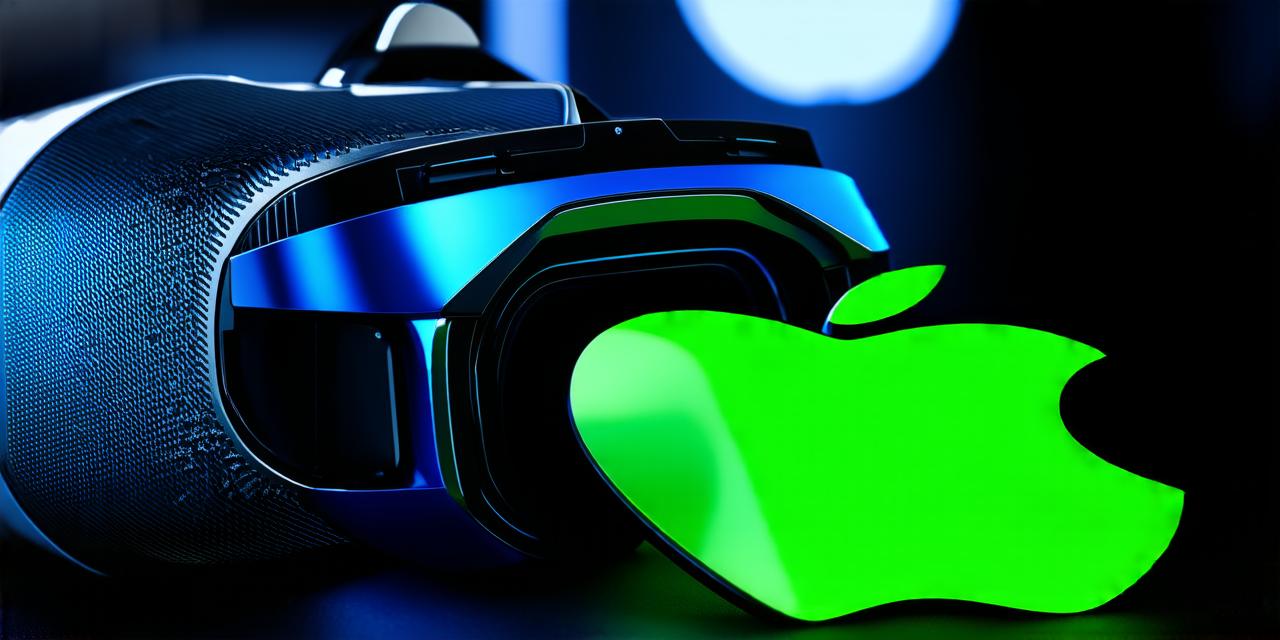<!DOCTYPE html>
Apple’s VR Development: A Brief Overview
According to multiple sources, Apple has been actively researching and experimenting with VR technology for several years now. The company has filed numerous patents related to VR headsets, displays, and input devices, indicating that they are taking this technology seriously.
In 2017, reports emerged suggesting that Apple had acquired a startup called Vuzix, which specialized in developing AR glasses. This acquisition was widely seen as a sign that Apple was interested in exploring the possibilities of VR and augmented reality (AR).
Since then, several other developments have hinted at Apple’s VR ambitions. For example, in 2019, the company released the latest version of its iOS operating system, which included support for ARKit 3.0. This update was seen as a significant step towards integrating VR and AR technology into Apple’s products.
In addition, there have been several leaks and rumors suggesting that Apple is working on a pair of smart glasses with built-in displays. These glasses could potentially be used for both AR and VR applications, further fueling speculation about the company’s involvement in this space.
The Potential Impact of VR on Apple’s Business
If Apple were to successfully enter the VR market, it would have a significant impact on the industry as a whole. The company’s resources, brand recognition, and user base could potentially drive widespread adoption of VR technology, which could lead to exponential growth in the market.
Furthermore, Apple has a history of creating products that seamlessly integrate different technologies, such as its iPhones and iPads. If they were to create a VR headset or glasses that worked seamlessly with their other devices, it could potentially revolutionize the way we interact with technology.
However, there are also potential risks associated with VR development. For example, prolonged use of VR can lead to motion sickness and discomfort, which could negatively impact user experience. Additionally, the high cost of VR hardware and software could limit its accessibility to a wider audience.
The Future of VR: Challenges and Opportunities
Despite these challenges, there are also significant opportunities for VR development. As more people become accustomed to remote work and virtual events, the need for immersive experiences is likely to grow. Furthermore, the continued advancements in computing power and display technology could make VR experiences more realistic and interactive than ever before.
Conclusion
In conclusion, while there is still much uncertainty surrounding Apple’s VR development, it’s clear that the company is taking this technology seriously. If they were to successfully enter the market, it could have a significant impact on both the industry and our daily lives. However, as with any new technology, there are also challenges and risks that must be carefully considered. Ultimately, only time will tell what the future of VR holds for Apple and the rest of the industry.
FAQs
1. Is Apple really working on VR technology?
Yes, multiple sources have suggested that Apple has been actively researching and experimenting with VR technology for several years now.
2. If Apple were to enter the VR market, what would be the potential impact on the industry?
If Apple were to successfully enter the VR market, it could potentially drive widespread adoption of VR technology and lead to exponential growth in the market.
3. What are the potential risks associated with VR development?
Prolonged use of VR can lead to motion sickness and discomfort, and the high cost of VR hardware and software could limit its accessibility to a wider audience. Additionally, there are concerns about privacy and data security when it comes to collecting and storing user data in virtual environments.
4. What is the future of VR?
While there are challenges and risks associated with VR development, there are also significant opportunities for growth and innovation. The continued advancements in computing power and display technology could make VR experiences more realistic and interactive than ever before. However, ethical considerations must also be taken into account as the technology continues to evolve.
